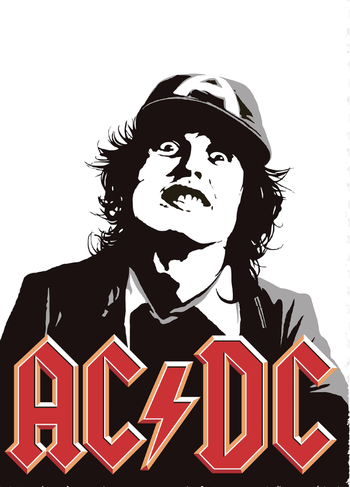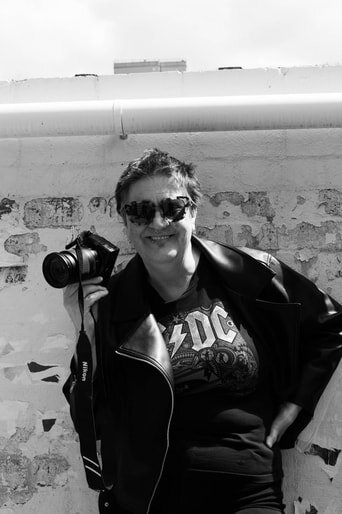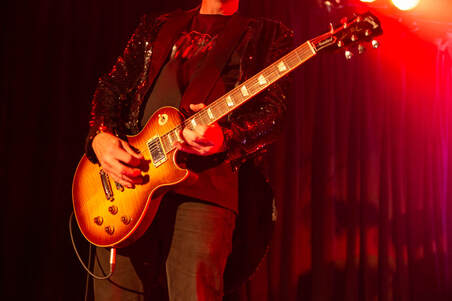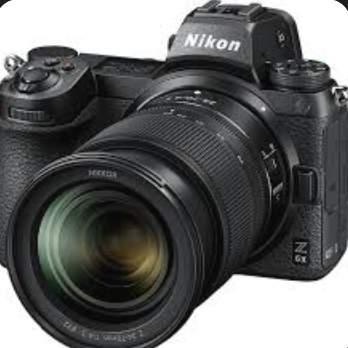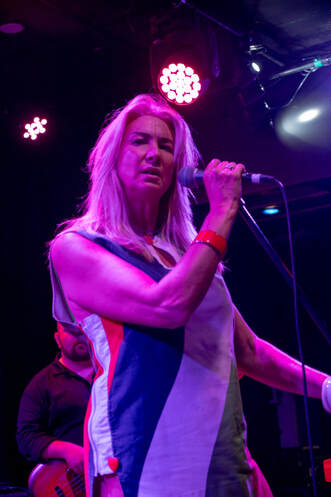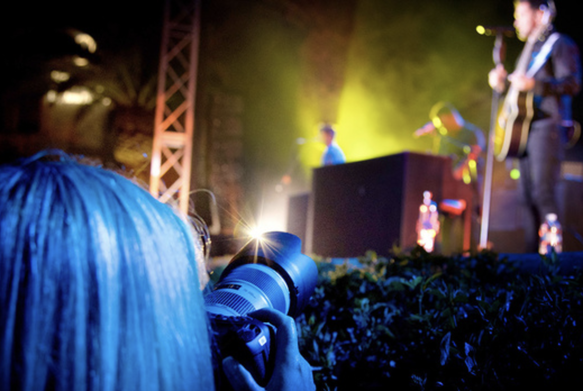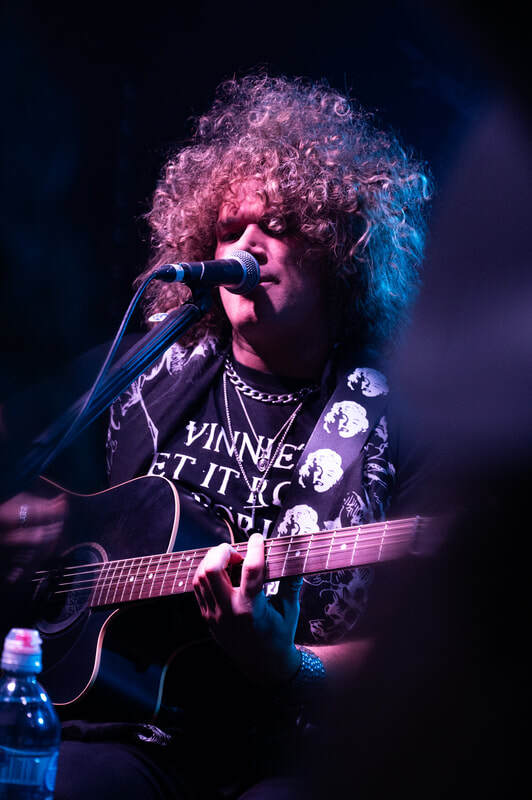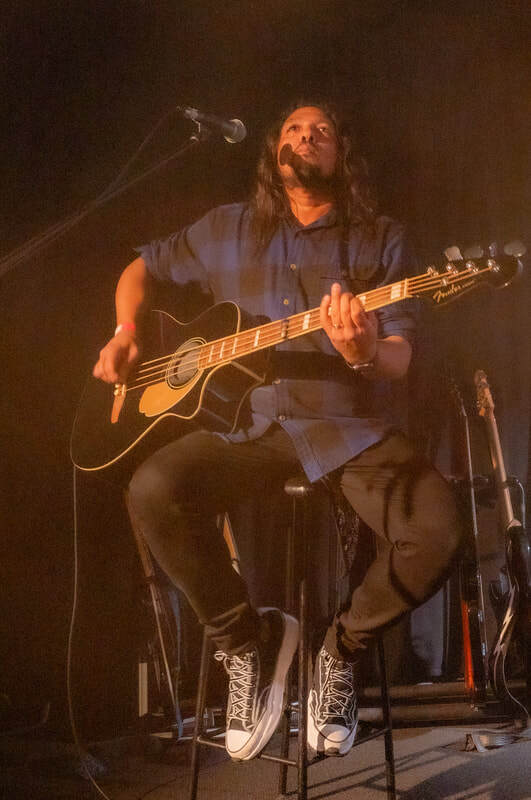- Published on
Looking Forward: Future Goals in Photography
As I reflect on my journey so far in live music photography, I’m excited about what lies ahead. My style has started to take shape, and with that foundation, I’m looking toward new opportunities, challenges, and creative avenues that can help me grow both technically and artistically. There are specific goals and ambitions that I’m keen to pursue, from the bands and venues I’d love to photograph, to new techniques and styles I want to experiment with.
One of my biggest aspirations is to shoot for larger, well-known bands and festivals. While I’ve had the privilege of capturing smaller, intimate gigs, there’s something exhilarating about the idea of photographing major bands with massive audiences. As I believe that with a small crowd would be a safe way to stay safe. Were as a massive crowd, you would have so much more to be a part of. The life of a small crowd, to the life of a massive crowd are two completely different beasts. As the bigger the crowd, the more energy there is.
The bands that I am looking at are Foo Fighters, AC/DC and U2 just to name a few. Events like Splendour in the Grass or Laneway Festival are high on my list, as well as some massive festivals overseas. The scale of these festivals, with their dynamic lighting, vibrant crowds, and energetic performances, presents an exciting challenge. Capturing that larger-than-life atmosphere would push me to my creative limits and it would also help me, to refine my skills, particularly in dealing with more complex lighting setups, fast-paced action, and the sheer unpredictability of live events on that scale.
There are also specific bands I dream of shooting. Bands with a strong visual identity, like Lady Gaga or Madonna, come to mind. Their stage presence, coupled with their use of innovative lighting and visual effects, would allow me to experiment with creative compositions and capture more than just the music—conveying the mood and energy that their performances evoke. I’d also love to photograph artists who use theatrical elements in their shows, like Florence + The Machine or Queen, where the performance itself tells a story. In terms of venues, I aim to photograph some of the iconic stages that have been at the heart of the live music scene. The Sydney Opera House is a dream for many photographers, offering both a stunning architectural backdrop and a stage for diverse performances. Similarly, The Forum in Melbourne, with its atmospheric setting, and Festival Hall, where so many legendary artists have played, are on my radar. These venues have a certain energy and history that can elevate the photos to something truly special, beyond just the performance itself.
As for the technical side, I want to continue evolving. Two areas I’m particularly interested in is black-and-white photography and shooting with a fisheye lens. While I’ve mostly worked in colour so far, I believe black-and-white could add a timeless, moody quality to my work. It would push me to focus more on contrast, shadows, and composition, forcing me to hone my eye for detail and emotion. There’s something powerful about stripping an image of colour and relying purely on light and texture to tell a story. Then using the fisheye lens, I believe it would give my live music photography a hole new dimension to the photos.
Another technique I’m keen to explore is motion blur. Concerts are full of movement, from the performers on stage to the crowd’s energy. I want to experiment with slower shutter speeds to capture the fluidity and dynamism of live music, allowing the motion to become a part of the image. Instead of freezing a moment in time, I’d like to convey a sense of movement, whether it’s the strumming of a guitar or the sway of an audience member.
Finally, I’m eager to push myself out of my comfort zone by trying different angles and perspectives. I’ve started moving around more during gigs, but I want to go further experimenting with wide-angle lenses for dramatic, immersive shots, or getting up close to capture intimate, emotional moments. Playing with perspectives will help me to tell a more complete story through my images.
In the future, I see myself becoming more confident in my voice and style as a photographer, while always staying open to new influences and experiences. Whether I’m shooting in a tiny local venue or at a massive festival, my goal is to continue growing, experimenting, and finding new ways to capture the magic of live music. There’s always something more to learn and explore, and that’s what keeps me excited about what’s to come. As you never know what is around the corner.
As I reflect on my journey so far in live music photography, I’m excited about what lies ahead. My style has started to take shape, and with that foundation, I’m looking toward new opportunities, challenges, and creative avenues that can help me grow both technically and artistically. There are specific goals and ambitions that I’m keen to pursue, from the bands and venues I’d love to photograph, to new techniques and styles I want to experiment with.
One of my biggest aspirations is to shoot for larger, well-known bands and festivals. While I’ve had the privilege of capturing smaller, intimate gigs, there’s something exhilarating about the idea of photographing major bands with massive audiences. As I believe that with a small crowd would be a safe way to stay safe. Were as a massive crowd, you would have so much more to be a part of. The life of a small crowd, to the life of a massive crowd are two completely different beasts. As the bigger the crowd, the more energy there is.
The bands that I am looking at are Foo Fighters, AC/DC and U2 just to name a few. Events like Splendour in the Grass or Laneway Festival are high on my list, as well as some massive festivals overseas. The scale of these festivals, with their dynamic lighting, vibrant crowds, and energetic performances, presents an exciting challenge. Capturing that larger-than-life atmosphere would push me to my creative limits and it would also help me, to refine my skills, particularly in dealing with more complex lighting setups, fast-paced action, and the sheer unpredictability of live events on that scale.
There are also specific bands I dream of shooting. Bands with a strong visual identity, like Lady Gaga or Madonna, come to mind. Their stage presence, coupled with their use of innovative lighting and visual effects, would allow me to experiment with creative compositions and capture more than just the music—conveying the mood and energy that their performances evoke. I’d also love to photograph artists who use theatrical elements in their shows, like Florence + The Machine or Queen, where the performance itself tells a story. In terms of venues, I aim to photograph some of the iconic stages that have been at the heart of the live music scene. The Sydney Opera House is a dream for many photographers, offering both a stunning architectural backdrop and a stage for diverse performances. Similarly, The Forum in Melbourne, with its atmospheric setting, and Festival Hall, where so many legendary artists have played, are on my radar. These venues have a certain energy and history that can elevate the photos to something truly special, beyond just the performance itself.
As for the technical side, I want to continue evolving. Two areas I’m particularly interested in is black-and-white photography and shooting with a fisheye lens. While I’ve mostly worked in colour so far, I believe black-and-white could add a timeless, moody quality to my work. It would push me to focus more on contrast, shadows, and composition, forcing me to hone my eye for detail and emotion. There’s something powerful about stripping an image of colour and relying purely on light and texture to tell a story. Then using the fisheye lens, I believe it would give my live music photography a hole new dimension to the photos.
Another technique I’m keen to explore is motion blur. Concerts are full of movement, from the performers on stage to the crowd’s energy. I want to experiment with slower shutter speeds to capture the fluidity and dynamism of live music, allowing the motion to become a part of the image. Instead of freezing a moment in time, I’d like to convey a sense of movement, whether it’s the strumming of a guitar or the sway of an audience member.
Finally, I’m eager to push myself out of my comfort zone by trying different angles and perspectives. I’ve started moving around more during gigs, but I want to go further experimenting with wide-angle lenses for dramatic, immersive shots, or getting up close to capture intimate, emotional moments. Playing with perspectives will help me to tell a more complete story through my images.
In the future, I see myself becoming more confident in my voice and style as a photographer, while always staying open to new influences and experiences. Whether I’m shooting in a tiny local venue or at a massive festival, my goal is to continue growing, experimenting, and finding new ways to capture the magic of live music. There’s always something more to learn and explore, and that’s what keeps me excited about what’s to come. As you never know what is around the corner.
